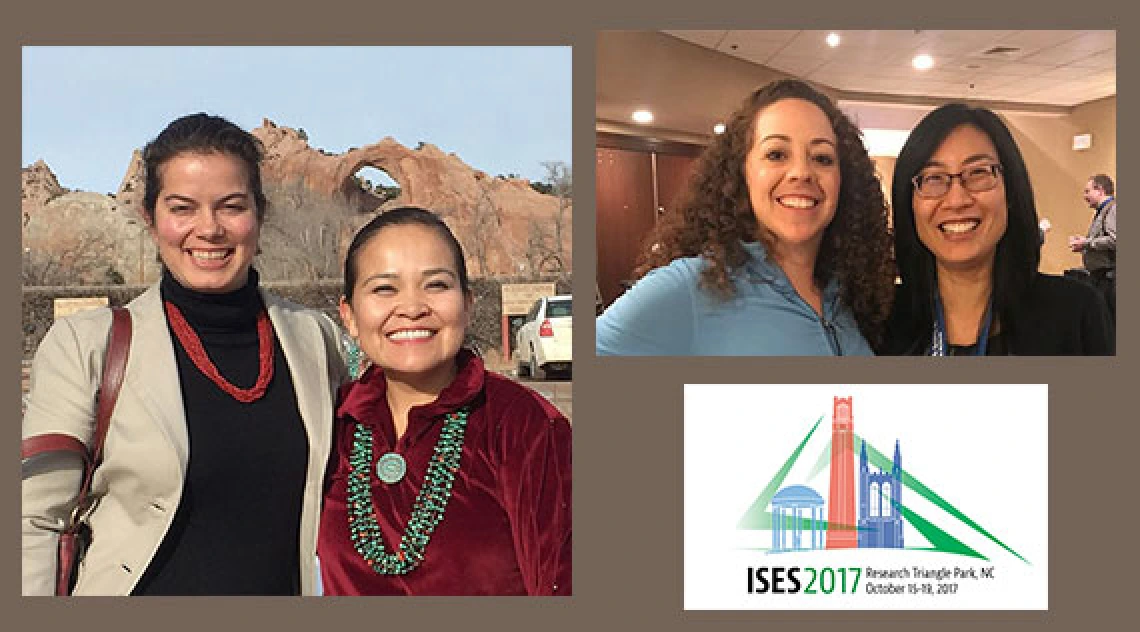The UA SRP has a big presence at the 2017 ISES Conference


The University of Arizona Superfund Research Program (UA SRP) was well-represented at the 2017 Annual Meeting of the International Society for Exposure Science (ISES) sharing research with a focus on working with the community.
Dr. Karletta Chief and Dr. Paloma Beamer collaborate to share locally-vital research at ISES 2017. Dr. Karletta Chief, UA SRP Community Engagement Core PI and Dr. Paloma Beamer, UA SRP Collaborator, worked together at the 2017 Annual Meeting of the International Society for Exposure Science (ISES) to present research on topics ranging from the Gold King Mine Spill to air pollution and pesticide application.
Together, Beamer and Chief shared information about the Diné (Navajo) and the San Juan River in a symposium titled: “Quantification of Diné activity patterns with the San Juan River in the wake of the Gold King Mine Spill.” Focusing on how the Diné interacted with the river before and after the spill, this presentation focused on research methodology and results.
Chief also gave a plenary talk titled “Desecration of Tó Baką’e and Diné way of life: How the Navajo Sacred Male River of the San Juan became the Yellow River.”

Beamer presented “Modeling Historic Air Pollution Concentrations with Land Use Regression in Tucson, AZ” and “Community-Level Characteristics and Environmental Factors of Child Respiratory Illnesses in Southern Arizona”. Both of these presentations dealt with understanding the links between air pollution and human health with a focus on human and community impacts.
Dr. Monica Ramirez-Andreotta shares community-based research and partnerships at ISES 2017. Dr. Monica Ramirez-Andreotta, UA SRP Research Translation Core PI, gave a symposium titled “Improving Environmental Health Literacy and Justice through Data Report Back and Free-Choice Learning.” The symposium focused on Ramirez’s work in a new, informal science education setting that is currently being implemented in communities in underserved areas. Ramirez-Andreotta spoke about how public participation, peer education, and information design are vital parts of data sharing, especially as she found that these communities are knowledgeable and motivated to partner with others to create new strategies. Her symposium gave specific attention to data visualizations, the role of knowledge mediators, and the delivery mode of results in order to advance science, environmental health, and risk communication.

